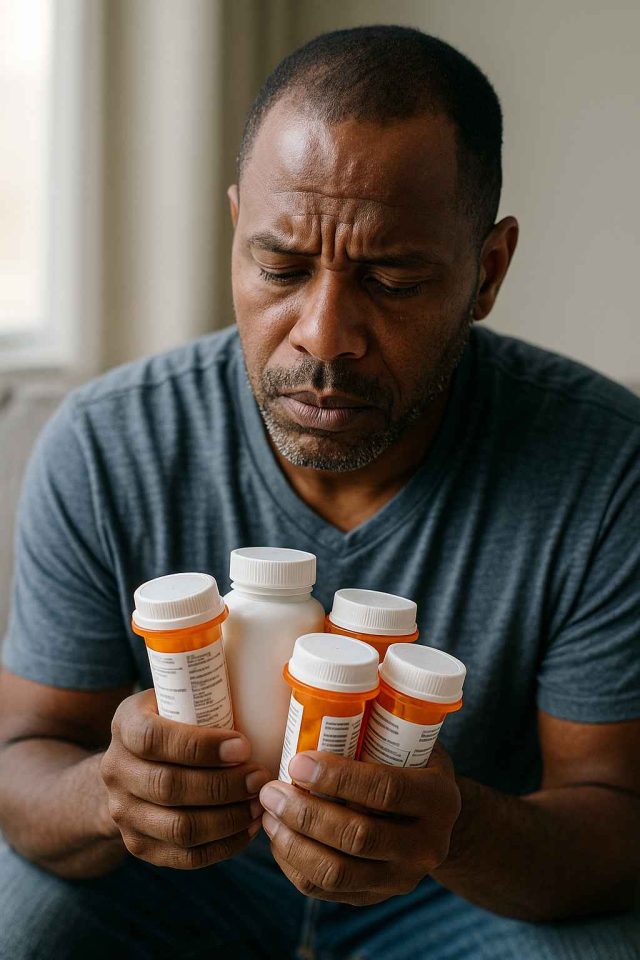The cost of managing HIV can be overwhelming, especially for those without comprehensive insurance or reliable income. However, HIV treatment has evolved in more ways than one—not only are medications more effective and better tolerated, but access is also improving. As of 2025, a growing number of affordable treatment options exist to help people living with HIV maintain their health without financial strain.
So how can individuals find care that fits both their medical needs and budget? Whether you’re newly diagnosed or helping someone navigate the system, understanding your options is key. This article outlines affordable HIV treatment paths, including branded and generic drugs, public assistance programs, and patient support resources.
Table of Contents
- Understanding the Cost of HIV Treatment
- Generic Antiretroviral Therapies (ARTs)
- Government and Nonprofit Assistance Programs
- Support Services and Community-Based Care
- Conclusion and FAQs
Understanding the Cost of HIV Treatment
The financial burden of HIV treatment can be daunting. A full regimen of antiretroviral therapy (ART) without insurance may cost upwards of $30,000 annually. Branded medications like Biktarvy, Dovato, and Juluca are highly effective but can be unaffordable for many.
Nonetheless, the out-of-pocket price isn’t the full story. Insurance, rebates, income-based subsidies, and drug discount cards can dramatically reduce actual costs. Many patients pay only a fraction of the sticker price.
For those without insurance or stable income, financial support is often essential. Fortunately, both public and private systems offer help. Planning ahead and working with a knowledgeable care provider or social worker can make a major difference.
Generic Antiretroviral Therapies (ARTs)
One of the most impactful trends in HIV treatment is the availability of generics. These medications offer the same therapeutic benefits as their brand-name counterparts but at significantly reduced prices.
Generic versions of tenofovir disoproxil fumarate (TDF), emtricitabine, efavirenz, and lamivudine are widely used in combination regimens. In many parts of the U.S., these can be obtained for as little as $100 to $300 per month.
Newer single-tablet generics, such as those replacing Atripla or Truvada, make it easier for patients to adhere to treatment while managing costs. In some cases, local pharmacies or HIV clinics have direct distribution relationships that cut prices even further.
Always check with your healthcare provider to ensure that switching to a generic is appropriate for your treatment history and resistance profile.
Government and Nonprofit Assistance Programs
Public programs remain a cornerstone of affordable HIV treatment access in the U.S. Chief among them is the Ryan White HIV/AIDS Program, which provides funding for medical care, medications, and support services to over half a million individuals annually.
Eligibility is based on income and other factors, and services are delivered through local clinics and public health departments. Ryan White also supports access to medications via the AIDS Drug Assistance Program (ADAP).
For those covered under Medicaid or Medicare, drug costs are often subsidized, though coverage can vary by state. The 340B Drug Pricing Program further helps safety-net providers offer discounted drugs to eligible patients.
In addition to government programs, nonprofit groups like The Assistance Fund, Patient Advocate Foundation, and HealthWell Foundation offer co-pay and premium assistance.
Make sure to consult a local HIV case manager or navigator—they’re trained to help patients access these valuable resources.
Support Services and Community-Based Care
Another vital component of affordable HIV treatment is comprehensive support. Beyond medication, care often includes transportation, housing, mental health services, and peer navigation.
Community-based organizations play a central role in delivering wraparound care. These groups often provide counseling, free testing, nutritional services, and linkages to care in trusted, accessible environments.
Telehealth has also improved access for rural and underserved populations. It eliminates the cost of travel and allows people to maintain continuity of care with fewer logistical hurdles.
Importantly, open communication with your care team about financial challenges is encouraged. Providers can help you explore different formularies, appeal insurance denials, or apply for manufacturer-sponsored patient assistance programs.
When in doubt, visit Healthcare.pro for tools to locate affordable care options or to connect with specialists in your area.
Conclusion and Key Takeaways
In 2025, HIV treatment doesn’t have to mean financial hardship. Thanks to the expansion of generic medications, federal and nonprofit programs, and community support systems, care is more accessible than ever.
Planning ahead, speaking with a social worker, and exploring patient-centered programs can dramatically lower the cost of care. No one should delay or avoid treatment due to cost—and now, fewer people have to. For more articles on Aids and HIV education visit AIDS.org.
FAQs
What is the most affordable HIV treatment available?
Generic ARTs like tenofovir, lamivudine, and efavirenz are among the most affordable and widely used options.
Can uninsured individuals get HIV medication?
Yes. Programs like Ryan White and ADAP provide free or low-cost medications to eligible uninsured individuals.
Are generic HIV medications effective?
Absolutely. Generics are FDA-approved and contain the same active ingredients as branded versions.
Where can I get help paying for HIV medications?
Check with local clinics, HIV case managers, or national foundations like The Assistance Fund and HealthWell Foundation.
Does Medicaid cover HIV treatment?
In most states, Medicaid covers a full range of HIV services, though benefits can vary.
Disclaimer:
This content is not medical advice. For any health issues, always consult a healthcare professional. In an emergency, call 911 or your local emergency services.
